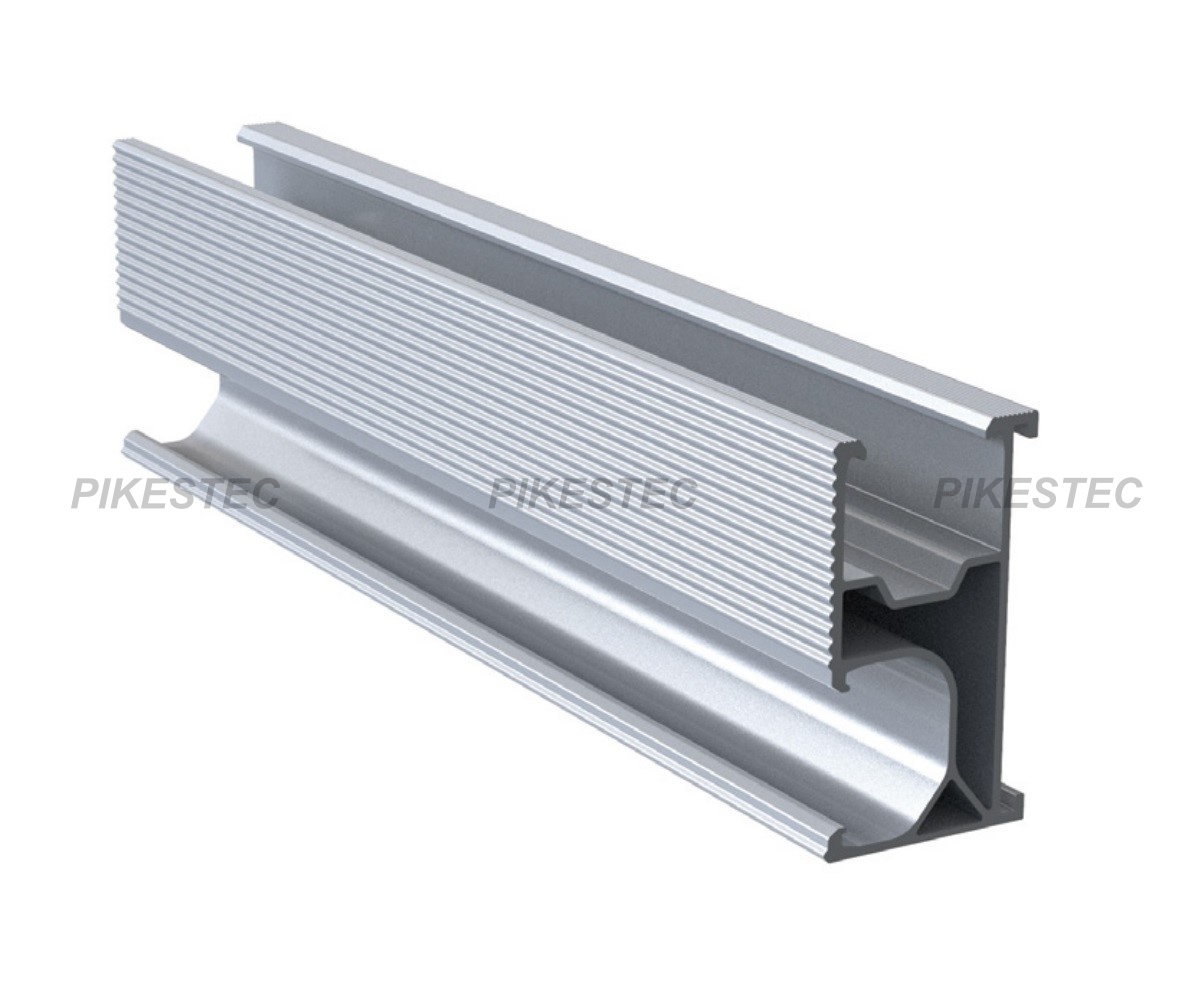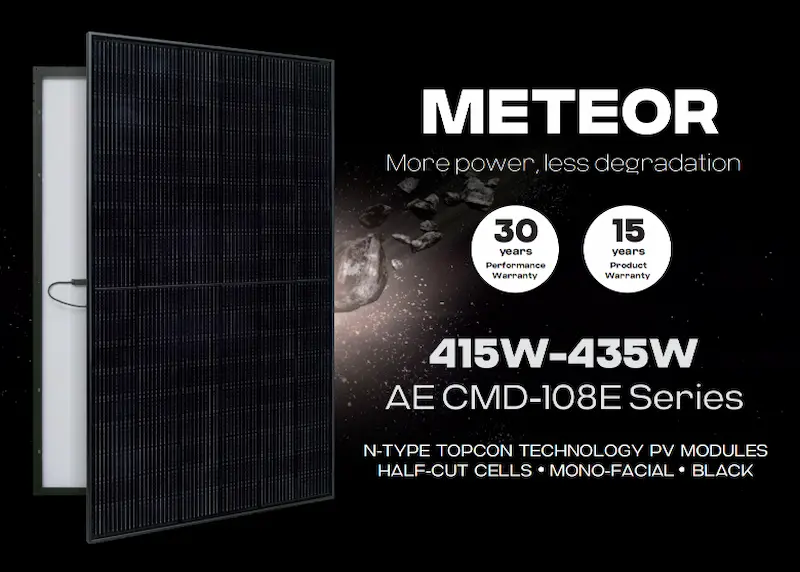How do you install solar panels on a flat roof?

Global solar photovoltaic capacity has grown by an astonishing 632 gigawatts between 2000 and 2019, (just one gigawatt is enough to power around 110 million LED bulbs), and with well over 100 gigawatts added in 2024 alone, that rate is only accelerating.
As the climate emergency takes hold, it’s no surprise to see more and more individuals and businesses installing solar panels on their roofs. Not only does the switch to renewable energy help reduce carbon emissions and protect our planet, but becoming independent of the power grid also saves you money and gives you greater control over your own energy needs.
It’s not uncommon to see solar panel installations on all sorts of buildings, and having solar panels on a flat roof is no exception. In many ways, they can be easier to install, thanks to greater access to roof spaces, but there are also a number of considerations to keep in mind to ensure the panels are as efficient as possible and don’t retain any dust or dirt they collect.
We’re going to explore all the main things you need to know about having solar panels installed on a flat roof -and how microinverters can increase their efficiency – so that you can make the right choice for your home or business.

Can you have solar panels on a flat roof?
The short answer is yes, you can have solar panels on a flat roof. It’s a perfectly common option for businesses and homes seeking their own source of renewable electricity, and flat roofs attract plenty of direct sunlight to make installing panels worthwhile.
Allowances do need to be made for the additional space required, as panels need to be spaced away from any parapet or perimeter walls to avoid them shading one another. Also, flat roof systems tend to rely on ballast to secure your panels against wind or stormy weather, which can increase the load-bearing demands made of the roof. Many also find that automatic panels, which adjust their angle according to the sun’s position, produce a significantly improved energy return.. All in all,you can contact us, as long as you work with a professional installation engineer, you’ll be able to create a solar array that operates effectively, whatever your specific needs.
What considerations need to be made before installing a solar panel on a flat roof ?
Before installing solar panels on a flat roof, there are several important considerations to keep in mind, as a flat roof presents unique challenges compared to a pitched or sloped roof.
Firstly, solar panels installed on a flat roof typically need to be tilted upwards to ensure they capture sufficient sunlight. Unlike on a pitched roof where the natural slope aids in capturing sunlight, flat roofs require additional inclination. In more advanced setups, the panels may even be equipped with an automated self-tilting mechanism that adjusts their angle throughout the day, maximizing power generation by keeping them optimally aligned with the sun’s path.
Tilting the panels is also crucial for maintaining their cleanliness. A tilted orientation allows rainwater to wash away accumulated dirt and debris, which helps maintain the efficiency of the solar panels. Typically, panels need to be mounted at a minimum angle of 10 degrees, but most installers aim for an angle between 20 and 50 degrees whenever possible, depending on the local climate and solar exposure.
Another important factor to consider is wind loading and the potential threat posed by severe weather conditions. Depending on the expected wind speeds and weather patterns in your area, you may need to choose between a non-invasive free-standing system that uses ballast (weights) to hold the panels in place, or a fixed racking system that is directly attached to the roof structure. Ballasted systems are less invasive and can be a good option for roofs where drilling holes is not feasible or desired. However, fixed racking systems can provide greater stability and security, especially in areas prone to high winds.
Moreover, the layout of the panels on a flat roof requires careful planning to avoid shading issues. Unlike a pitched roof, where the natural slope helps manage shading, a flat roof necessitates strategic spacing to prevent shading from parapet walls and the panels themselves. This spacing requirement means that you won’t achieve the same power capacity from the same surface area as you would on a pitched roof. Therefore, it’s important to design the layout in a way that minimizes shading and maximizes the available sunlight exposure.
By taking these considerations into account, you can ensure that your solar panel installation on a flat roof is both efficient and effective, providing you with reliable solar energy while also protecting the structural integrity of your roof.

Installing solar panels on a flat roof
With the growing demand for renewable energy, installing solar panels on a flat roof has become a fairly straightforward process that can be easily accomplished by a professional team. The first step in the installation process involves estimating your power potential, which includes several key assessments.
Your installer will begin by helping you determine how many solar panels can fit on your flat roof while ensuring proper spacing. This involves accounting for the presence of perimeter or parapet walls, which can cast shadows and reduce the efficiency of the panels. Proper spacing between the panels is also essential to prevent shading, as even small shadows can significantly impact the overall energy production. Additionally, the installer will need to consider the location of any existing air conditioning units or other rooftop fixtures that might interfere with the placement of the panels or hinder maintenance access.
Another critical assessment is the condition of your roof. The installer will evaluate whether the roof is structurally sound and capable of supporting the weight of the solar panels and their mounting systems. If the roof is nearing the end of its lifespan or shows signs of deterioration, the installer may recommend replacing or upgrading it before proceeding with the solar panel installation. This ensures that any future roof repairs or replacements can be managed without complications, such as the need for temporary removal of the solar panels.
Finally, the installer will help you decide on the mounting system for your solar panels. You can opt for a fixed system that attaches directly to the roof, providing a more secure and stable installation. Alternatively, a more common approach is to use a free-standing setup, where ballast (weights) is employed to secure the solar units against wind and stormy weather. This method is less invasive and can be a good choice for roofs where drilling holes is not feasible or preferred.
By carefully considering these factors, you can ensure that your solar panel installation on a flat roof is both efficient and effective, providing you with reliable solar energy while also protecting the structural integrity of your roof.
conclution
You can contact us and consult with a flat roof solar panel mounting installation professional to determine the most suitable system for your project.




